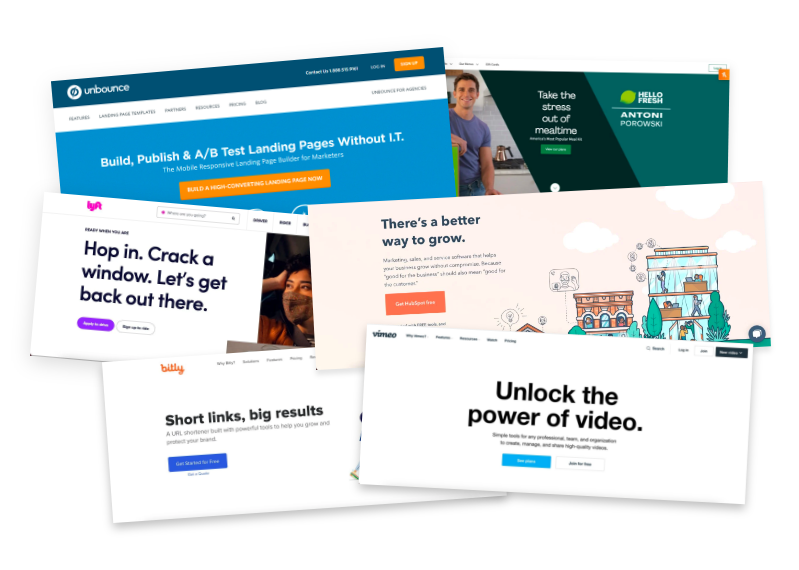One size doesn’t fit all: How to find the perfect market-fit for your product
Product-Market Fit is a common concept in the startup world. It’s the secret ingredient that makes some companies thrive – and that the lack of it is what lies behind almost every failure.
During our 11 years of building products for our clients, over 60 products launched. We observed that there are some products where growth seems to come easily and very naturally, regardless of organizational chaos. On the other hand, we have those that require a lot more effort to grow at all — if they can even manage any progress at all!
The truth is that building a great product is only the starting point to succeed, but it’s never the answer to why there are so many great products that never reach $100M.
What is a product-market fit?
The term had been coined unofficially by Dan Olsen in his book “The Lean Product Playbook”; “product-market fit” refers to product-market fit when “your product meets real customer needs and does so in a way that is better than the alternatives.”
“Product-market fit means being in a good market with a product that can satisfy that market.” This is the general definition of product-market fit, from a business perspective, given by Andreessen Horowitz.

Though the definition might be somewhat vague, Andreessen continues with an illustration of what product-market fit feels like:
You can always feel when product/market fit isn’t happening. The customers aren’t quite getting value out of the product, word of mouth isn’t spreading, usage isn’t growing that fast, press reviews are kind of “blah”, the sales cycle takes too long, and lots of deals never close.
And you can always feel product/market fit when it’s happening. The customers are buying the product as fast as you can make it — or usage is growing just as fast as you can add more servers. Money from customers is piling up in your company checking account. You’re hiring sales and customer support staff as fast as you can. Reporters are calling because they’ve heard about your hot new thing, and they want to talk to you about it.
The best and most straightforward definition of product-market fit I found so far was given by Josh Porter in Principles of Product Design:
Product-market fit is when people sell for you.
“Product-market fit is a funny term, but here’s a concrete way to think about it. When people understand and use your product enough to recognize its value, that’s a huge win. But when they begin to share their positive experience with others, when you can replicate the experience with every new user who your existing users tell, then you have product-market fit on your hands. And when this occurs, something magical happens. All of a sudden, your customers become your salespeople.”
At Mobiversal, we see product-market fit essential for any digital solution hitting the app stores. After all, the essence of the product-market fit is to satisfy the needs and wants of your users while turning it into a profitable venture. All of this while creating a positive impact in the world we live in.
Why is product-market fit important?
One of the biggest problems of nowadays companies is that they don’t have product-fit and think they have, according to Alex Schultz, Facebook’s VP of Growth.
So why is it essential to find your product fit? You need to make sure you have a product people are willing to buy before thinking about scaling it and acquiring more users. Therefore, it’s important to note here that there are two phases in the life of any existing product: a pre-market-fit product phase and a post-market-fit phase.
Determining your product fit has several benefits:
- Scaling. Trying to scale your product before achieving product-fit sets your business for failure. Scaling in the pre-market-fit phase means pomping more money in customer acquisition, and it grows exponentially in the moment you move away from the early-adopters stage. In the post phase, scaling done right means constant growth and better sustainability regardless of whether operation changes or not in time.
Note: In the pre-phase, potential customers are unlikely to understand your value proposition, how your product can help them, and their acquisition cost is higher.
- Customer retention. Having a product fit means a higher chance for customers to like your product because you satisfy a need, which means they are more likely to become loyal customers and not turn to competitors. Happy customers equal lower costs for customer retention and lower churn rates, leading to higher revenue for your business.
- Lower customer acquisition cost. Customer acquisition costs refer to the amount spent by the company to acquire new customers. Companies that achieve product-market fit benefits of a lower customer acquisition cost, through word of mouth and free media exposure of happy customers, help grow the product organically.
How to find product-market fit
In his book, Lean Product Playbook, Dan Olsen talks about the fundamentals of achieving product fit, understanding the market (potential customer’ needs), and building the product on top of it (satisfying the condition), as illustrated in the pyramid below.

Understanding the market
- Establish your target customer.
Your buyer persona should be the base upon which all other concepts are developed. It’s for them you are building the product; they will be the main user. The better you know your buyer persona, the better base you build your product upon.
- Determine the underserved need of the market.
Though the demographic of your user persona may differ in age, gender, life situation, their underserved needs are all shared; it’s the common ground they will have in interacting with your product.
Your main goal needs to be understanding which needs are currently being neglected by the existing products in the market. You can identify their undeserved need though reading the feedback they left for your competition on various dedicated review platforms, UX questionnaires, or product surveys
Satisfying the market
Once you have identified the need and the target customer, it is time to offer your solution, now comes the product development.
- Define your value proposition.
Your value proposition should give a clear picture of why customers choose to buy your product or service. It can be presented under a business/marketing statement that summarizes the benefit your product or service will provide. In other words, your answer to your customer’s needs.
Some of the best unique examples of value propositions are:
- Unbounce – Build, Publish & A/B Test Landing Pages Without I.T.
- Lyft – Hop in. Crack a window. Let’s get back out there.
- HubSpot – There’s a better way to grow.
- Bitly – Short links, big results
- Vimeo – Unlock the power of video.
- HelloFresh – Take the stress out of mealtime

4. Specify your minimum viable product (MVP) feature set.
This refers to a set of must features that would transform your value proposition into a tangible solution.
Deciding on your product’s core features and functionality can be a complex process. That’s why it’s essential to keep in mind that this set of features must address the customer’s most pressing needs. There are different methods that you can use to help you prioritize which features to include in your MVP, like the prioritization matrix; just keep in mind: TOP FEATURE OFFERED.

5. Building your MVP – Minimum Viable Product
For your product, MVP means the minimal form of your product, released to the customers, with minimal features and costs, and tested on the market.
When working on a mobile app having a product team made of developers, designers and marketers can be crucial for the quality of the end product. Your digital product needs to be built with quality in mind, from screens to software development.
Note: We wrote an entire article about What is an MVP and how to build one.
6. Test your MVP.
The last step in finding out if you have what it takes to be a winner product on the market is to test your minimum viable product. Get your product in the hands of your customers and collect feedback. After collecting the feedback, you can improve your App and then test it again, build again, test again, and learn again.
How to measure product-market fit?
When you measure product-market fit, you measure things like:
- The level of satisfaction of your customers,
- The level of engagement with your products/services,
- How often do your customers use your product and services,
- How many new users (or customers) do you get through word of mouth.
It is crucial to remember that different metrics are essential for other business models and industries.
For example, a mobile App is interested in product usage interval, the number of installs, while a website may be interested in time on page, bounce rate etc. Though the metrics can vary, everything comes down to the actual value the customer gets from your product or service.
- NPS- Net Promoter score
NPS is a metric that measures customer satisfaction and loyalty. NPS is still widely used by most companies simply by sending out a survey asking the customers to answer key questions using a 0-10 scale.
Users are grouped, based on their answers, as follows:
- Promoters (score 9-10) are loyal enthusiasts who will keep buying and referring others, fueling growth.
- Passives (score 7-8) are satisfied but not enthusiastic customers who are vulnerable to competitive offerings.
- Detractors (score 0-6) are unhappy customers.
- The 40% rule
Sean Ellis, a well-known investor, and product designer has created something called the “Product/Market Fit” survey, in which he asks users a simple question:
“How would you feel if you could no longer use the product?”
- Very disappointed
- Somewhat disappointed
- Not disappointed at all (it isn’t that useful)
If 40% of users answer “Very disappointed,” you’ve successfully achieved product/market fit. And the more people who answer “Very disappointed,” the stickier your product is, and the closer you are to meet the market’s needs. So, according to Sean Ellis’ interview, you know you achieved product-market fit if 40% of users answer “very disappointed”. The higher percentage of people responding “very disappointed,” the better.
However, companies can and often fall into two traps:
- Listening to all of the customers’ feedback, especially you have a multi-tiered structure. When measuring the PMF, you should concentrate on the paying customers; this doesn’t mean you shouldn’t take into account the feedback from non-paying customers, just that it should have a different weight.
- Ignoring the fact that product-market fit is a PROCESS, not a GOAL. By measuring your PMF, you will only find out if you’re heading in the right direction and how close you are to accomplishing it, not if you reached the destination.
- Churn rate. Do users stick with your products or services?
You may have heard that the churn rate is one of the most critical metrics for your business. It’s also an indication of whether or not you’re close to finding product-market fit with customers, which will make them more likely to stay long enough and buy into what we’ve got going here! So, a low churn rate indicates you’re on the right track to achieve product-market fit.
Conclusion
Turning your idea into a successful and scalable product isn’t an easy or a quick journey, but it’s worth it. After years of experience in bringing products to life, from inception to launching, we know one thing for sure, there is no success without having a product-market fit first. Knowing the target market and the need is part of the recipe for a successful product.
If you’re looking to achieve product-market fit, reach out to Mobiversal, drop us an email and we’ll be in touch shortly.



